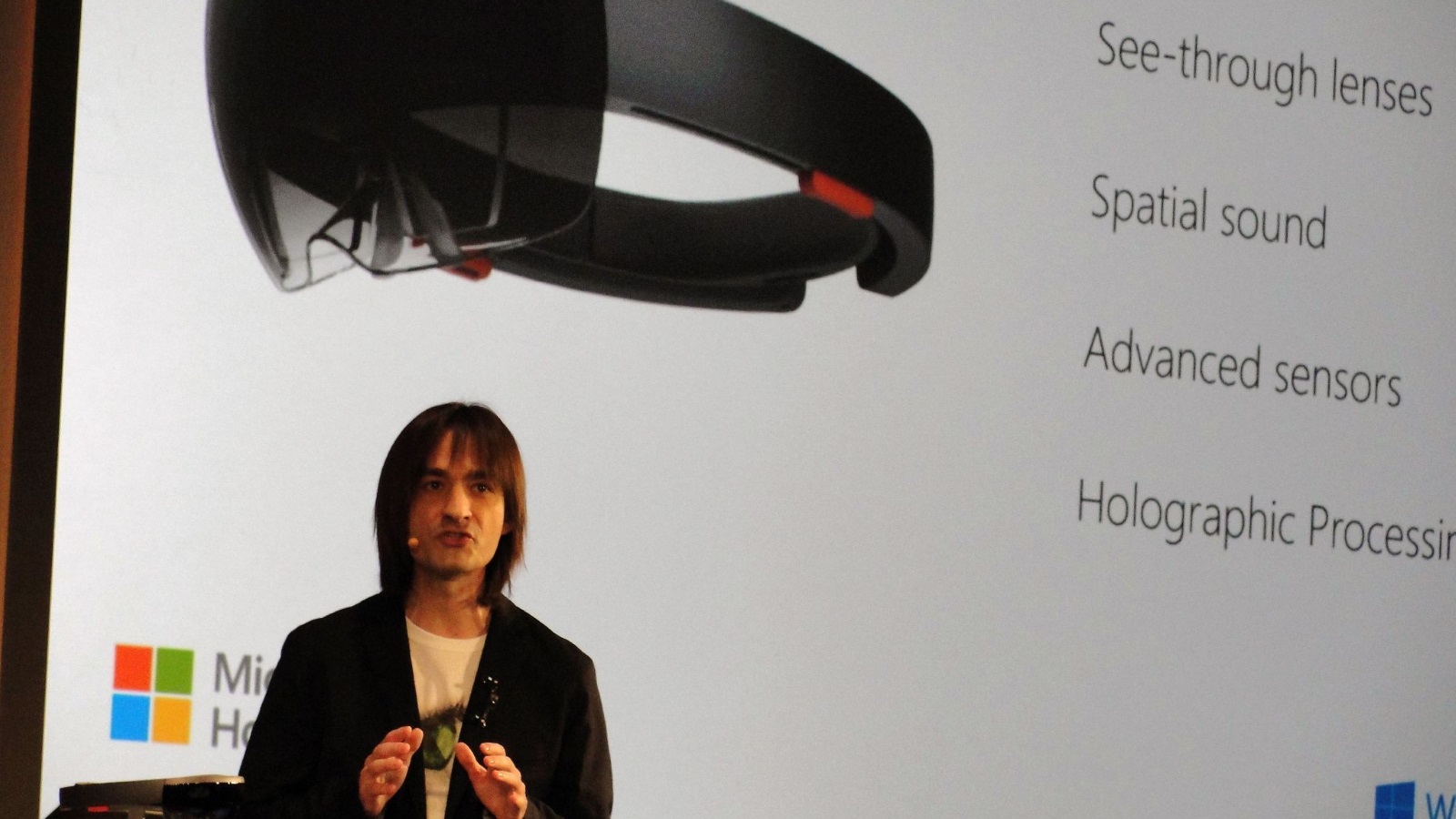 NEWS
NEWS
 NEWS
NEWS
 NEWS
NEWS
![]()
Today, Microsoft managed to capture the rapt attention of a million geeks—and everyone else—when the software giant unveiled its newest product: an augmented reality headset called HoloLens. Windows Holographic is essentially a head-mounted display acting as a pair of goggles that adds images to the visible world, and it’s amazing. This reveal happened during the recent Microsoft’s Windows 10 event.
Wearing the HoloLens changes the very world around the user into a computer screen. The visor is transparent, like a standard set of wrap-around goggles, that projects “holograms” that augment the reality seen by the user.
Augmented reality has been an infantile technology for some time working primarily through the flat screens of mobile phones and tablets. Even Google Glass cannot provide an overlay of what a wearer is currently seeing with its tiny display. The between-eye-and-world design of HoloLens makes it one of the first mass-market consumer devices that will actually bring augmented reality into the living room.
The demonstration and marketing materials for HoloLens reinforce this by showing it being used to change the very world around users. In one part of the teaser commercial, a woman is fixing a sink with the aid of a distant other who can see what she’s seeing and even interact with her view by adding arrows. In another segment, Minecraft explodes into a living room to have a block-built house sitting atop a coffee table.
The type of entertainment that could be borne out of wearing augmented reality goggles dramatically changes the way that computer interaction works and re-imagines the concept of the user interface.
For a good look at the teaser commercial, demo, and other marketing materials The Verge has videos. For the “Transform your world with holograms” teaser video for the HoloLens, watch the video below.
Wired has an excellent article about a visit with Alex Kipman, chief inventor at Microsoft’s Studio C, who showed off the device to the eager journalists. Kipman is also best known for his incubation of and work with the Kinect, which was a highly innovative piece of technology in of itself.
The HoloLens headset is a fully fledged mobile device with its own CPU and GPU as well as what Microsoft calls the HGPU (HoloGraphic Processing Unit). The device and all its computing power is developed to act as its own tetherless device that can render and process its own information natively without the need to connect to a computer.
From the marketing materials and sale’s pitch, the HoloLens must be light enough to wear comfortably and—although it seems a little bulky about the back of the head—will not change the weight distribution of the head too much. Mobile miniaturization technology leading to high end, low-voltage GPUs and CPUs likely has led to this sort of device becoming a reality.
Currently the demo UI with the HoloLens prototype is somewhat primitive. It is possible to talk to the headset to give it Kincet-like commands and holographic UI elements react to finger taps (called an “air tap”), however in demos users have not been able to grab or move objects as seen in the marketing material.
HoloLens shows Minecraft buildings erupting into reality, blocks and all.
.
The unveiling of the HoloLens reveals that Microsoft is much further along with augmented reality technology than anyone expected. Users who demoed the product describe the visual effect as vivid, lacking lag, and popping right out of reality.
The interactive capabilities shown in the marketing materials show HoloLens would be a platform for apps, collaboration via Skype and OneDrive, video games such as Minecraft (and potentially others), and even 3D holographic interactive media.
No news has surfaced yet as to pricing or a release date, but it’s obvious that Microsoft is well along in the production and polish of this device. It is expected that the HoloLens will become available along the same timeline as Windows 10.
Support our mission to keep content open and free by engaging with theCUBE community. Join theCUBE’s Alumni Trust Network, where technology leaders connect, share intelligence and create opportunities.
Founded by tech visionaries John Furrier and Dave Vellante, SiliconANGLE Media has built a dynamic ecosystem of industry-leading digital media brands that reach 15+ million elite tech professionals. Our new proprietary theCUBE AI Video Cloud is breaking ground in audience interaction, leveraging theCUBEai.com neural network to help technology companies make data-driven decisions and stay at the forefront of industry conversations.